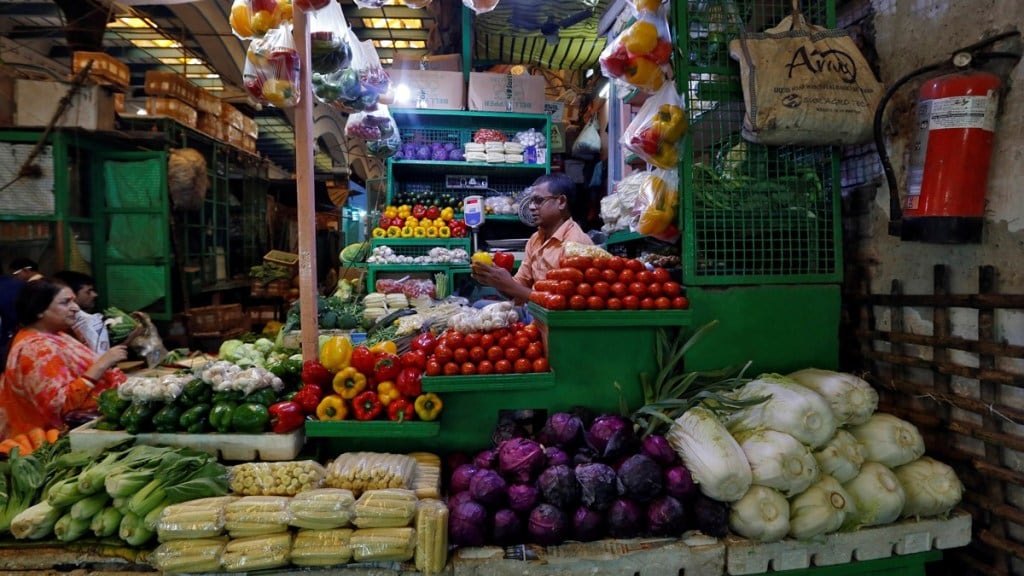By Abu Huzaifa
In the context of India, where a large segment of the population spends a significant portion of their income on food items, food inflation plays a critical role. In the recent months, the elevated food inflation has been major policy concern in the country. This article aims to examine the causes of high domestic food inflation and compare it with international food prices.
Food WPI and CPI inflation tend to move together, albeit with some lag, and these trends are often influenced by seasonal factors that impact food prices. The upward and downward trends usually are over a short periods due to the strong seasonality. Elevated food prices in the recent months in the country were mainly driven by the fruit and vegetable prices increased due to excessive and uneven rainfall in some parts of the country.
Global food inflation, as indicated by the Food and Agriculture Organization (FAO), was 12.9% in July 2022 and plummeted to -10.9% in October 2023. The FAO Food Index monitors movement in the global prices of commonly traded food commodities. It’s worth noting that the current negative global food inflation is primarily attributed to a strong base effect from the preceding year’s high inflation rates.
Moreover, it is crucial to comprehend the degree of correlation between domestic wholesale and retail food prices. An analysis, spanning from April 2013 to October 2023, reveals a strong correlation between CPI and WPI-based food inflation (72.1%), indicating a significant association between wholesale prices and retail prices. The relationship over the period February 2017-December 2023 seems stronger. Notably, in most months, CPI food inflation was reported higher than WPI food inflation. In 2020, CPI food inflation was, on average, 4.5% higher than WPI food inflation, attributed to disruptions in the supply chain caused by the outbreak of the Covid-19 pandemic. The lower wholesale prices could not be translated to retail level. In contrast, in 2021, CPI food inflation was lower by 2.1% compared to WPI food inflation, mainly due to selective lockdowns during the second wave of the pandemic.
The correlation analysis from April 2013 to October 2023 indicates that world food price inflation is moderately correlated with WPI food inflation (41.8%) and insignificantly with CPI food inflation. The coefficient can change depending on the period selected. This could be attributed to the nature of the prices being captured, as WPI and the FAO food index are based on prices of commonly traded items, while CPI inflation is based on retail prices. Thus, the movement of WPI-based food inflation closely aligns with global food inflation compared to CPI-based food inflation. It is also observed that the wholesale prices of edible oils (90%) and sugar (71%) are more closely associated with the global prices of these commodities.
From February 2017 to December 2020, domestic food prices were closely integrated into global food prices, as CPI, WPI, and FAO-based food inflation moved in unison. The divergence primarily emerged with the onset of the second wave of Covid-19 in March 2021 and persisted until May 2021. World food inflation peaked at 40.6% in May 2021, while WPI and CPI food inflation stood at 8.2% and 5.0%, respectively. The lower domestic inflation is attributed to the government’s timely and effective measures that have successfully controlled domestic prices. The implementation of the Pradhan Mantri Garib Kalyan Anna Yojana (PMGKAY), which provided free food grains to beneficiaries contributed to cooling down WPI and CPI food inflation to 2.6% and 0.7% in September 2021, respectively. The government also took a series of steps in the month of May 2022 to control the food inflation (WPI 10.6% and CPI 8% in May 2022). Those policy initiatives included banning wheat exports, duty-free imports of cooking oils, imposition of limits on sugar imports, doubling the fertilisers subsidies, etc. These timely steps brought down food inflation in the latter period.
The government typically takes a series of steps to stabilise prices such as releasing goods from the buffer stock, setting stock limits and monitoring to curb hoarding, and changes in trade policy tools. These steps may also involve rationalising import duties, modifying import quotas, and imposing restrictions on the export of commodities, among other strategies. In the case of short-term upsurge in prices of seasonal commodities, unless this lingers on and spills over to general inflation, these measures are more appropriate than monetary policy measures—food WPI and CPI inflation declined to 1.07% and 6.6% in October 2023, from 8.3 % and 11.5% in July 2023, respectively.
(The author is an IES officer, posted at the Union Ministry of Commerce and Industry)
Views are personal

